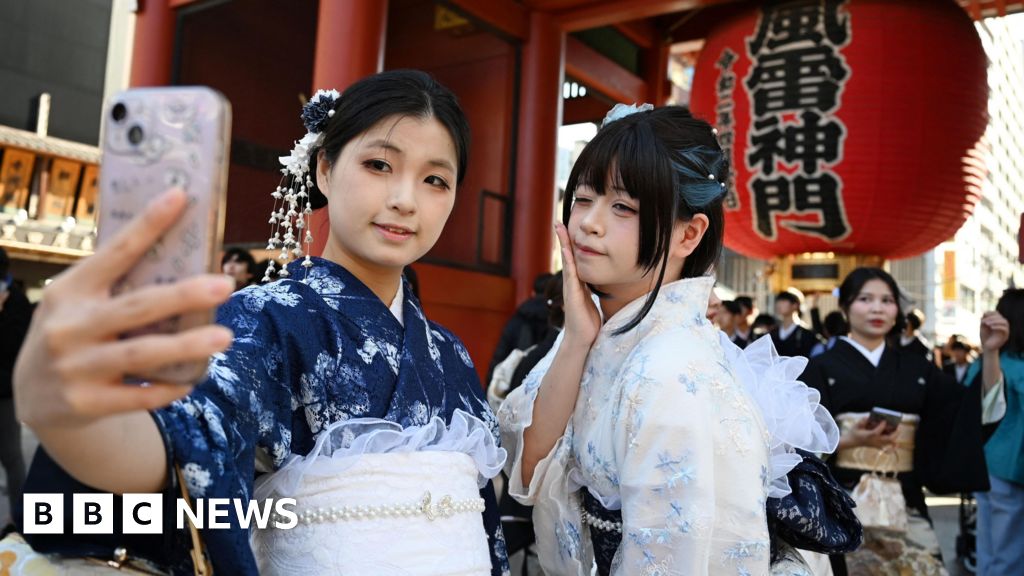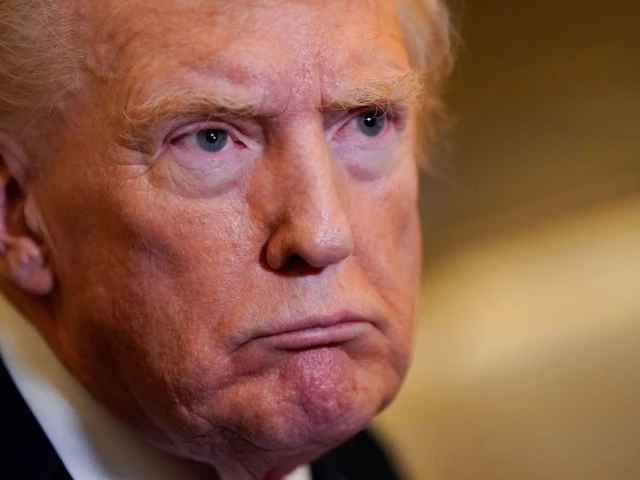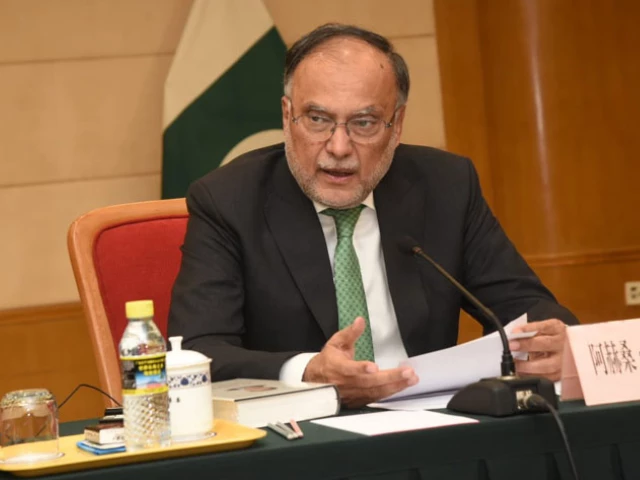Business
Trade deficit is not crisis, it’s investment in growth | The Express Tribune

Rising imports of industrial inputs signal economic revival, not decline, as Pakistan embarks on tariff reform
ISLAMABAD:
Each month, when the Pakistan Bureau of Statistics (PBS) releases its trade figures, one number grabs headlines: the trade deficit or the gap between imports and exports. The latest data, showing a 38% increase in the first four months of the fiscal year, was no exception. Predictably, critics of trade reform were quick to argue that Pakistan’s import liberalisation is driving the country towards economic ruin.
Some even call the tariff reform a “suicide mission.” Their solution is predictable: return to the old playbook of regulatory and additional duties. But this strategy has been tried repeatedly over the last 17 years, and each time it worsened the very problems it aimed to solve, leading to stagnant growth, deeper poverty, and declining exports.
What this debate often ignores is a simple question: what kinds of imports are rising? About 85% of Pakistan’s imports consist of petroleum, chemicals, machinery, textile industry raw materials, metals, and essential food products such as edible oils, tea, and lentils. These are not luxury items; they are critical inputs for production, energy, and food security. Rising imports of this kind suggest that industries are reviving and consumer demand is strengthening, both signs of economic activity.
Despite the widening trade gap, the deficit has not drained foreign exchange reserves or worsened the current account. Even with recent loan repayments of $400 million, Pakistan’s foreign exchange reserves remain stable at around $14.5 billion. If imports are building productive capacity, the resulting trade deficit becomes an investment in future growth. As industries modernise and productivity improves, exports catch up, just as they have in nearly every fast-developing economy.
Some critics question why exports have not risen despite tariff cuts. But the reform process only began in July 2025. Until the last fiscal year, Pakistan was still raising tariffs. In July 2024, regulatory duties were increased on over 600 items and additional customs duties on more than 2,000. The current tariff rationalisation plan spans five years, aimed at correcting 17 years of flawed policy. Expecting exports to surge within months is unrealistic – structural reforms take time to bear fruit.
Economic history supports this view, and India’s experience offers a striking example. When the country began liberalising in 1992, its imports and exports were nearly balanced at around $20 billion, with a $2 billion trade deficit. By 2024, its merchandise imports had risen to approximately $720 billion, while exports grew to $437 billion, resulting in a $283 billion trade deficit – with China accounting for half. Yet no one accuses Manmohan Singh of steering India towards economic “suicide.” On the contrary, he is praised for revitalising India’s economy after decades of stagnation.
Pakistan’s own experience is equally telling. As the economy opened in the 1990s and accelerated around 2000, both imports and exports grew rapidly. Imports of telecom equipment, machinery, and industrial materials built the foundation for modern services and infrastructure. The trade deficit widened, but instead of staying the course, Pakistan reversed reforms after 2008, slowing growth and weakening competitiveness. The result has been prolonged stagnation.
Another major argument against tariff reform has been the fear of revenue loss. Yet the numbers tell a different story. The Pakistan Institute of Development Economics (PIDE) had long projected gains instead of only minimal losses, and they were right. In the first quarter of this fiscal year, customs duty collections rose by 13%, exceeding targets even after duty cuts.
It may be too soon for firm conclusions, but both past experience and current trends suggest that lower tariffs are encouraging legal imports and improving compliance, not eroding revenue.
Pakistan now stands at a crossroads. It can continue to oscillate between protectionist fear and half-hearted reforms, or it can follow the path of countries that embraced openness to accelerate growth. Pakistan is no longer a bystander in global affairs. It is now positioned at the intersection of shifting geopolitical and economic currents.
To seize this moment, Pakistan must lower trade barriers and open its economy to investment and integration with regional and global markets. Opportunities of this scale are rare – if Pakistan lets this one pass, it may not get another for a generation.
To sum up, a trade deficit driven by productive imports is not a loss; it is an investment in the future. As global trade patterns shift and smaller economies integrate with larger blocs, Pakistan must not be left behind. For too long, powerful lobbies have distorted the tariff system through SROs and exemptions, protecting inefficiency at the cost of progress. It is time to level the field, resist rent-seeking pressures, and stay the course on reform. Pakistan’s path to prosperity lies not in retreat or isolation, but in embracing openness and claiming its rightful place in regional and global value chains.
THE WRITER IS A MEMBER OF THE STEERING COMMITTEE OVERSEEING THE IMPLEMENTATION OF THE NATIONAL TARIFF POLICY 202530. HE HAS PREVIOUSLY SERVED AS PAKISTAN’S AMBASSADOR TO THE WTO
Business
Japan tourism and retail stocks slide after China row

Japanese tourism and retail stocks fell on Monday after China warned its citizens not to travel to the country as Tokyo and Beijing remain locked in a row over Taiwan.
Japan’s Prime Minister Sanae Takaichi, who has been a vocal critic of China and its military activities in the region, suggested this month Tokyo could take military action if Beijing attacked Taiwan.
Shares in cosmetics company Shiseido plunged nearly 10% while department store chain Takashimaya and the owner of global fashion chain Uniqlo fell more than 5% in early trading.
China has consistently ranked among the top sources of tourists visiting Japan.
The share price falls came after the dispute between Beijing and Tokyo has deepened in recent days.
On Sunday, the Chinese government urged its citizens to reconsider studying in Japan, citing risks to their safety and a rise in crimes targeting Chinese people.
China’s Education Ministry also told students already based in Japan to closely monitor the security situation.
Last year, more than 100,000 Chinese students were enrolled in educational institutions in Japan, according to a Japanese government survey.
Also over the weekend, Chinese airlines – including China Southern Airlines, China Eastern Airlines, and Air China – offered refunds for flights to Japan.
Takaichi said in the Japanese parliament on 7 November: “If there are battleships and the use of force, no matter how you think about it, it could constitute a survival-threatening situation.”
A “survival-threatening situation” is a legal term under Japan’s 2015 security law, referring to when an armed attack on its allies presents an existential threat to Tokyo.
In such a situation, Japan’s self-defence forces can be called upon to respond to the threat.
Taiwan lies around 100km (60 miles) south of the closest Japanese island.
Beijing sees Taiwan as a breakaway province that will, eventually, be part of the country, and has not ruled out the use of force to achieve this.
But many Taiwanese consider themselves to be part of a separate nation – although most are in favour of maintaining the status quo where Taiwan neither declares independence from China nor unites with it.
Business
Guardrails in place for AI-led commerce: Visa – The Times of India

SINGAPORE: Payments giant Visa is looking to launch agentic commerce pilots across the Asia-Pacific region as regulatory and ecosystem readiness advances by early next year. Agentic commerce refers to a new era where AI-powered agents shop and pay on behalf of users. The company’s Visa Intelligent Commerce (VIC) programme incorporates features like tokenisation, authentication, payment instructions, and transaction signals. As far as India is concerned, VIC will be launched once regulatory approvals are in place. “If you take the combination of tokenisation and RBI’s new authentication circular, the enabling regulatory environment is right for agentic commerce. We will have discussions. I want to have my team go and demo it to RBI, and we want to make sure we do it in a responsible manner with all the due regulatory approvals in place,” Visa’s head of products and solutions (Asia-Pacific) T R Ramachandran said during the Singapore Fintech Festival here last week.“The pace of e-commerce and quick commerce, year-on-year growth in India has been staggering. The growth is no longer restricted to cities like Mumbai, Gurgaon, Kolkata, Chennai and Hyderabad. Amazon tells us that they have 6,000 pin codes from which they get shopping orders, which is huge. The rapid growth of LLMs (large language models) will only accelerate online shopping. As far as agentic commerce is concerned, we are not letting somebody run amok without guardrails or without controls or without constraints,” he said.When it comes to detecting fraud, Ramachandran said that Visa has been securing the ecosystem with AI-driven risk services for banks and fintechs in India. It has implemented AI-led ‘visa advanced authorisation’ and ‘visa risk manager’ across most banking partners and fintechs, strengthening real-time fraud detection and ecosystem resilience.(The writer was in Singapore at the invitation of Visa)
Business
When will Americans receive $2,000 tariff dividends? Donald Trump speaks out – The Times of India

President Donald Trump has said Americans could see $2,000 tariff dividend checks in 2026, but no exact date has been set yet, although he hinted at the timeline.The payments are expected to come from revenue raised through tariffs.Speaking to reporters aboard Air Force One on Friday, Trump said the checks will not arrive in time for the Christmas shopping season. “It will be next year. The tariffs allow us to give a dividend. We’re going to do a dividend and we’re also going to be reducing debt,” he said.The MAGA chief first floated the idea of tariff dividends earlier this month, suggesting that high-income earners would be excluded, though he did not define a specific income threshold. Trump said his Truth Social platform, “A dividend of at $2000 a person (not including high income people!) will be paid to everyone. Those against the tariffs are FOOLS!”
Rebate for families making less than $100,000
Treasury Secretary Scott Bessent explained last week that the administration was still discussing income limits. “Well, there are a lot of options here that the president’s talking about a $2,000 rebate and those — that would be for families making less than, say, $100,000,” Bessent told Fox & Friends, later clarifying that no final decision had been made.The plan faces legal hurdles. The US Supreme Court has questioned the legality of Trump’s tariffs under the International Emergency Economic Powers Act, raising the possibility that some could be struck down. Trump acknowledged that if the Court rejects the tariffs, “Then I’d have to do something else.” The payments would also require congressional approval, with some Republicans sceptical and urging a focus on reducing the federal deficit.Trump’s tariffs, including IEEPA tariffs, have raised around $90 billion since implementation, with all tariffs taking in $195.9 billion in fiscal 2025. Analysts estimate that if the $2,000 dividend were limited to individuals earning under $100,000, the cost would be about $300 billion, according to the New York Post. Trump has repeatedly argued that tariffs are a tool to rebalance trade and support American businesses. Treasury Secretary Bessent said the tariffs are intended to create a “perfect storm” for rebalancing trade rather than merely raising revenue.The GOP leader remains committed to the idea of sending checks to Americans. “We are taking in Trillions of Dollars and will soon begin paying down our ENORMOUS DEBT, $37 Trillion. Record Investment in the USA, plants and factories going up all over the place,” he posted on Truth Social.
-

 Entertainment1 week ago
Entertainment1 week agoChina unveils£5.4 bn Fujian, its most advanced aircraft carrier yet
-

 Tech6 days ago
Tech6 days agoFrom waste to asset: Turning ethanol production CO₂ into jet fuel
-

 Politics1 week ago
Politics1 week agoIDF lawyers warned of possible Gaza war crimes: US intel findings
-

 Tech2 days ago
Tech2 days agoNew carbon capture method uses water and pressure to remove CO₂ from emissions at half current costs
-

 Sports1 day ago
Sports1 day agoTexas A&M officer scolds South Carolina wide receiver after touchdown; department speaks out
-

 Politics3 days ago
Politics3 days agoBritish-Pakistani honoured for transforming UK halal meat industry
-
Sports1 week ago
College football winners and losers: The catch of the year saves Indiana
-

 Business1 week ago
Business1 week agoMore than 1,000 flights cancelled as US air traffic cuts enter second day


1724844288-0/BeFunky-collage]_______-(8)1724844288-0-640x480.webp)









